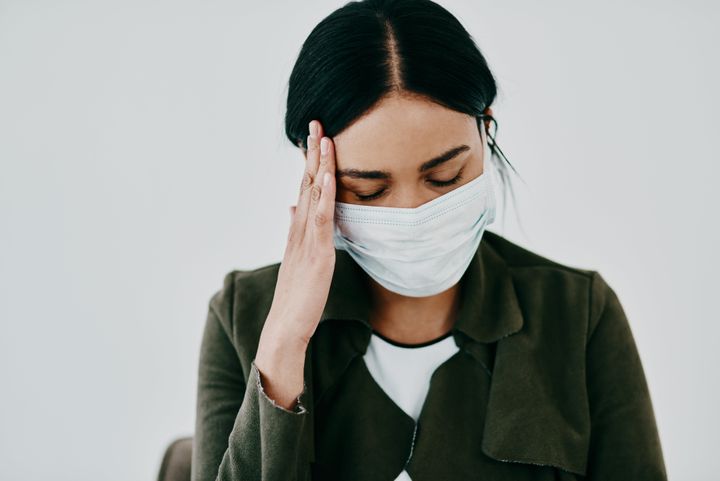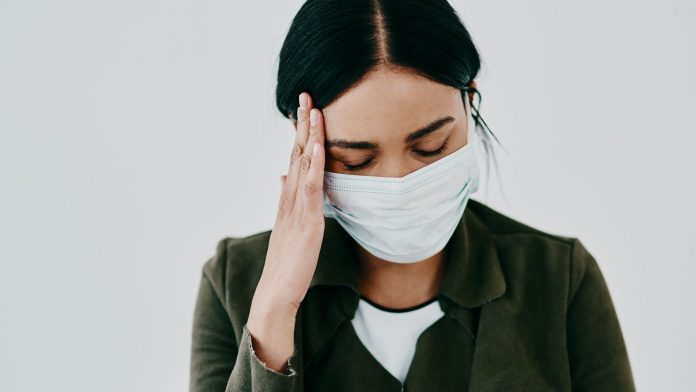[ad_1]
If there’s one constant truth about the coronavirus, it’s that information about it right now is always evolving. That includes the symptoms you may experience if you’re infected.
People noticed this week that the Centers for Disease Control and Prevention appeared to have added three more COVID-19 symptoms to its official list: Nausea, diarrhea and runny nose. The issues join an ongoing catalog of other signs of the disease, including loss of taste or smell, fever, sore throat, body aches and shortness of breath.
The newly added complications aren’t exactly “new” ― many have pointed them out as symptoms since the beginning of the pandemic. But each person experiences the virus somewhat differently. And since the coronavirus is still so new in the medical world, experts are continuing to learn about how the virus behaves and what it does to a person’s body. Part of that includes discovering and vetting symptoms, some of which may not have been well-understood as a main part of the disease at the beginning of the pandemic.
So, as of this moment, what can you expect if you get sick? Here’s a quick rundown of some of the most discussed symptoms ― which typically appear two to 14 days after you’ve been exposed to the virus ― and how common they might be.
(Note: You don’t need to have all of these symptoms to have COVID-19. Think of this as a menu of options, not a guarantee of everything.)
Fever, usually around or above 100 degrees.
Most cases of the coronavirus ― whether they’re considered “mild” and monitorable at home or they result in hospitalization ― will have a fever associated with it. The temperature may land around 100.5 degrees or higher, and fevers on the higher side could be a sign of a serious case that requires immediate medical attention. During the recovery process, you may experience varying degrees of the fever.

Body aches, fatigue, chills.
Muscle aches and malaise were reported as indicators of COVID-19 at the beginning of the pandemic, and they still persist as a major side effect today. Johns Hopkins Medicine lists the issue as one of the most common symptoms of the virus.
Cough and shortness of breath.
COVID-19 is a respiratory disease that often targets the lungs, which means you may experience a cough and shortness of breath. These two symptoms were also some of the first issues that experts flagged at the beginning of the pandemic. People with COVID-19 might find it difficult to walk short or long distances without getting out of breath. In severe cases, it can cause trouble breathing and severe chest pain, which requires immediate medical attention.
Diarrhea, nausea or other digestive issues.
These possible symptoms were around long before the CDC quietly added them to its official list. Health experts flagged stomach problems as an occasional complication early on in the pandemic, but the issues were less discussed than other symptoms. Research published in the American Journal of Gastroenterology in March found that patients with COVID-19 experienced digestive issues such as a loss of appetite, diarrhea, vomiting and/or abdominal pain.
What’s unique about this symptom is potentially when it appears after a the coronavirus infection. “Clinicians must bear in mind that digestive symptoms, such as diarrhea, may be a presenting feature of COVID-19, and that the index of suspicion may need to be raised earlier in these cases rather than waiting for respiratory symptoms to emerge,” the researchers wrote in their study.
Loss of taste or smell.
Perhaps the strangest of all the symptoms, COVID-19 may cause a change in smell or taste. Doctors in the United Kingdom raised the issue in March, and it gained more attention over time as more public figures shared that they’d experienced the symptom. The CDC added the issue to their official COVID-19 symptom list in May.
Congestion or runny nose.
Many people could confuse this symptom for that of a cold or flu, and it’s also one of the newer ones on the CDC’s list. Since the coronavirus spreads mainly through respiratory droplets, it’s important to cover your nose when you sneeze (as well as your mouth if you cough) and properly discard all face tissues or anything that touches those areas.

Headaches or other neurological problems.
A small preliminary study from China published in April found that some people with COVID-19 experienced problems that affected their central nervous systems. The main issue was headaches, which the CDC also added to their official symptom list in May. The research showed that some people also experienced dizziness and nerve pain.
Some reports suggest COVID-19 has led to other troubling brain problems in some patients, like psychosis and a dementia-like syndrome. This has yet to be extensively studied like other symptoms and appears to be way less common so far.
A range of skin issues.
Some people with COVID-19 have also reported skin problems such as hives or rashes. Skin-related issues can even show up in children with the disease, often as rashes that mimic Kawasaki disease, an inflammatory illness. These are not listed on the CDC’s official list of symptoms as of now, but experts have been noticing them appear in COVID-positive patients for a few months.
“Skin findings in patients with COVID-19 can be extraordinarily diverse,” Harold Lancer, a board-certified dermatologist, previously told HuffPost. “Hive-like rashes, itchy or not, are the most common. Blotchy, red, migrating spots have also been noted along with areas that look like inflamed eczema, seborrheic dermatitis or perioral dermatitis.”
Blood clots, pneumonia or other severe complications.
Doctors have also noticed that COVID-19 has led to blood clots in severe cases ― even in young people who may not otherwise be at high risk for the medical issue. This can lead to swollen toes (known as “COVID toes”), strokes and more serious problems. One study found that as many as a third of people in the intensive care unit because of COVID-19 experienced clotting. The virus has also been known to cause pneumonia and lung damage, which can lead to hospitalization.
Nothing at all.
That’s right: Sometimes the biggest, most common symptom is no symptom at all (at least as far as one can physically be aware of). Many people can experience asymptomatic COVID-19 and not even know they’re sick. This is arguably one of the more insidious forms of the disease because people could accidentally spread it without knowing.
It’s unknown exactly how many cases are asymptomatic. Some estimates say up to 80% of cases can be mild or asymptomatic. Other models show that around 41% of cases may be attributed to asymptomatic people.
And being asymptomatic doesn’t mean you’re in the clear: Research is emerging that some people who initially had no symptoms appear to develop signs of minor lung inflammation, similar to walking pneumonia. They just might not realize it if they have no other physical symptoms.
Again, we’re still constantly learning new information about the coronavirus. Until there’s a solid treatment and/or vaccine, we all need to take proper precautions whether we’re showing any of these symptoms or not. Wear your mask, wash your hands and keep your distance.
Experts are still learning about the coronavirus. The information in this story is what was known or available as of press time, but it’s possible guidance around COVID-19 could change as scientists discover more about the virus. Please check the Centers for Disease Control and Prevention for the most updated recommendations.
A HuffPost Guide To Coronavirus
[ad_2]
Source link






















